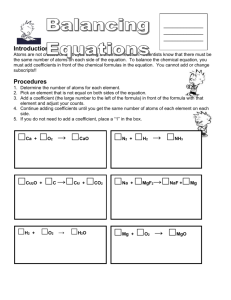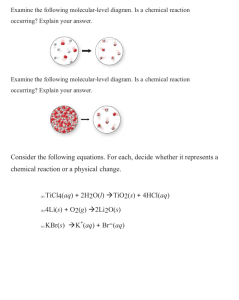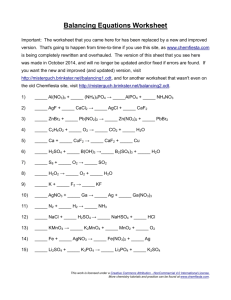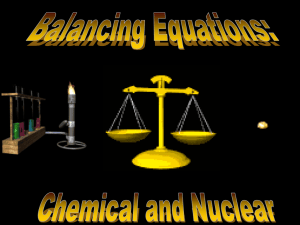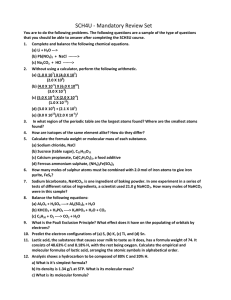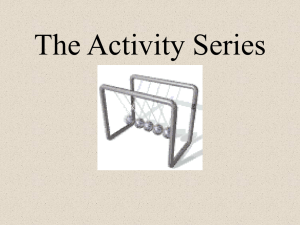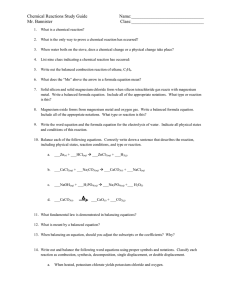Stoichiometry
advertisement
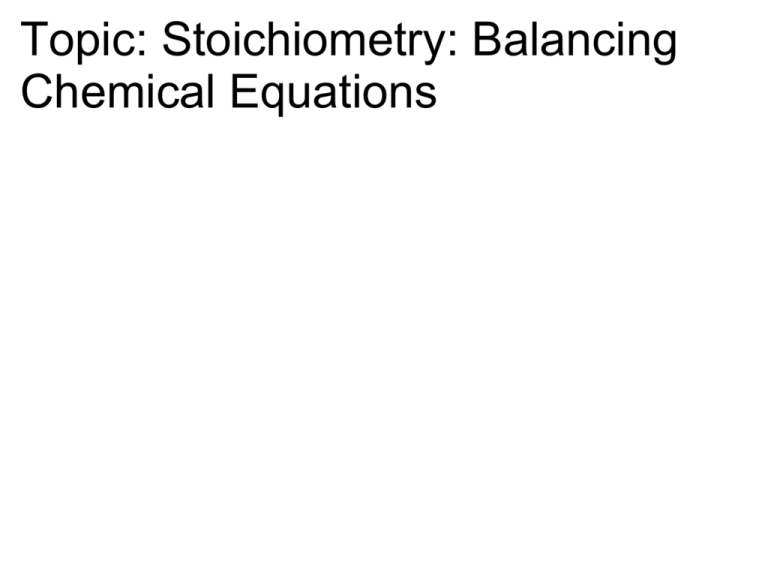
Topic: Stoichiometry: Balancing Chemical Equations What is stoichiometry? • The study of quantitative relationships in a balanced chemical equation • Balance equations represent chemical reactions – Remember in chemical reactions 3 things are conserved • Matter • Energy • charge Law of Conservation of Matter • Matter is neither created nor destroyed in a chemical reaction • Mass reactants = Mass products • Chemical bonds in reactants may break • New bonds may form to produce products • Number of atoms of each element is “constant” • # of atoms of each element is the same on both sides of the equation Writing Chemical Equations Begin with word equation Solid Tin (IV) Oxide is heated with Hydrogen gas to form tin metal and water vapor. Next go to skeleton equation: replace names of substances with chemical formulas SnO2(s) + H2(g) Sn(s) + H2O(g) Balance skeleton equation: # of atoms of each element is the same on both sides of the equation (law of conversation of mass) - let’s figure out how to balance Equation Balancing… let’s RAP R A P SnO2(s) + H2(g) Sn(s) + H2O(g) 122- Sn - 1 O -1 H -2 NOT BALANCED SnO2(s) + 2 H2(g) Sn(s) +2 H2O(g) 124 2- Sn - 1 O -1 H -2 2 4 • Find the most complex compound and then compare the number of each element on product side and reactant side • Look at H2O – 2 Hydrogen and 1 oxygen • On reactant side, 2 Oxygen and 2 Hydrogen • Use Coefficients to balance the numbers of each atom, check number of atoms as you go: NOTE: NEVER CHANGE SUBSCRIPTS BALANCED NOTE: Coefficients must be in lowest possible ratios 2SnO2(s) + 4H2(g) 2Sn(s) + 4H2O(g) Fe + O2 Fe2O3 • HINTS: – Most Complex = Fe2O3 – ODDS ARE AKWARD, so Try to make O3 even!!!!!!! 4Fe + 3O2 2 Fe2O3 AgNO3 + MgCl2 Mg(NO3)2 + AgCl • HINTS: – Keep polyatomics together • • • • NO3 Ag Cl Mg 2 AgNO3 + MgCl2 Mg(NO3)2 + 2 AgCl Na + H2O NaOH + H2 • HINTS: – ODDS ARE AKWARD – try to make even • H on product side H + H2 = 3 hydrogens 2 Na + 2 H2O 2 NaOH + H2

